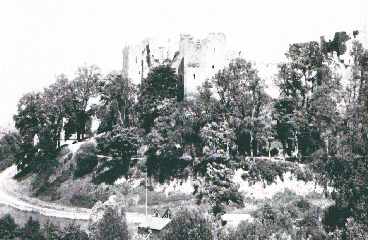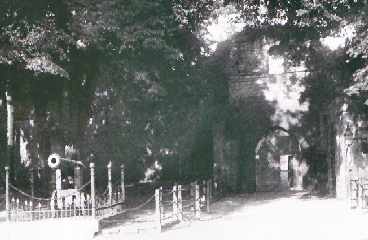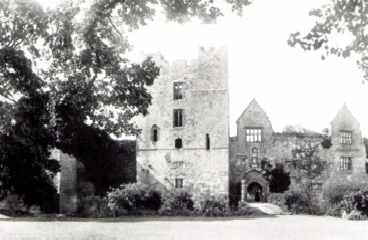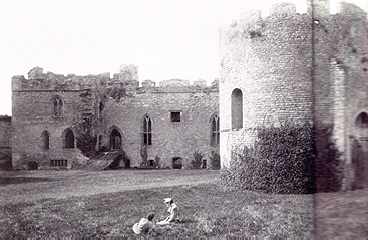The castle from the quarry 1896 notice the paths around the castle - walks were
first laid out here in the 18th century for the gentry to enjoy. At the time it
was a very popular pastime to promenade along such walks, meet friends, gossip
and show off your finery in this way. |
The castle entrance 1892.
The entrance to the castle is still guarded, over one hundred years later,
by this cannon. In the summer guided tours of the town are held at weekends,
and these always meet by the cannon outside the castle entrance. |
The castle Interior.
This is a lovely view of the main part of the castle. The
original castle is the massive keep in the centre, with later buildings added
on the right. The shrubs below the castle have since been removed. They are
growing in the dry moat, which originally served as a quarry providing the
stone with which to build the castle.; |
The Round Chapel 1892.
What a romantic setting for a young, courting(?) couple!
The great Hall dates from the 13th century: It was here that two princes,
Edward and Richard, lived in the 1400s. they then went to live in the Tower of
London - and mysteriously disappeared from history. |





